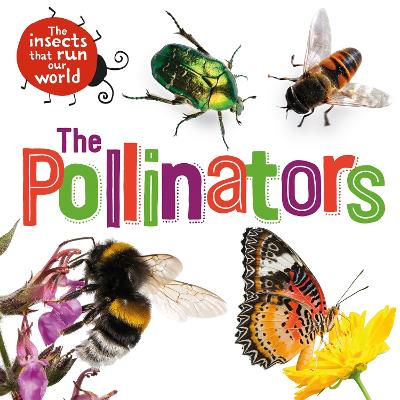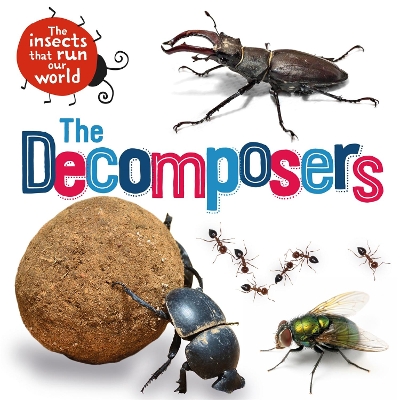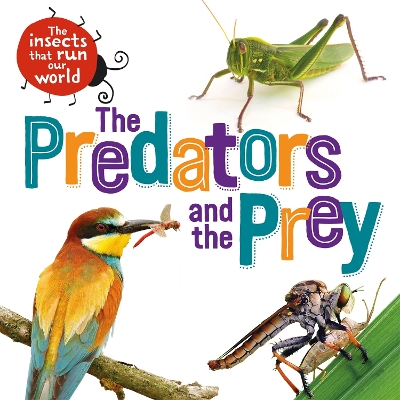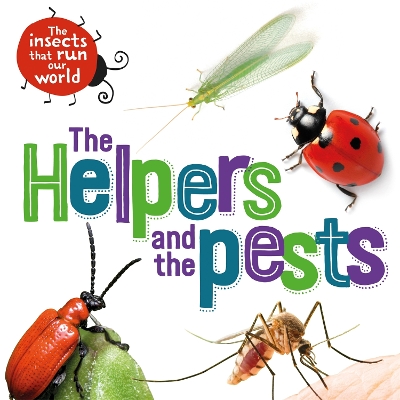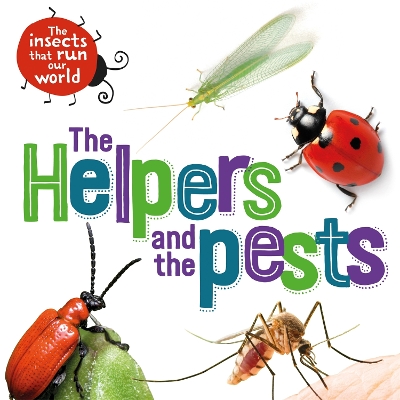The Insects that Run Our World
5 total works
Perfect for young children studying living things and their habitats in their science lessons, or for young minibeast fans, this book explores the importance of pollinating insects. Pollinating insects allow countless wild and cultivated plants to make fruit and seeds. Bees, of course, are featured, but also wasps, the tiny flies that pollinate the cacao tree flowers, hoverflies, beetles, butterflies and more. Alongside the simple text, fantastic close-up photographs show the insects at work.
The book is part of a series, The Insects that Run Our World, for children aged 6 plus. The titles are: The Pollinators, The Decomposers, The Predators and the Prey and The Helpers and the Pests.The books include information about how insects are threatened by habitat changes and pollution and how we can help them.
Perfect for young children studying living things and their habitats in their science lessons, or for young minibeast fans, this book explores the importance of insect decomposers such as the beetles that munch on dead trees, breaking them down and returning nutrients to the soil. It also looks at the flies that lay eggs on dead animals or food waste and whose grubs clean up these dead things to recycle their nutrients and clean up the planet. Then there are ants, collecting up crumbs of food to take back to their nests and the dung beetles that deal with - dung. Alongside the simple text, fantastic close-up photographs show the insects at work.
The book is part of a series, The Insects that Run Our World, for children aged 6 plus. The titles are: The Pollinators, The Decomposers, The Predators and the Prey and The Helpers and the Pests.The books include information about how insects are threatened by habitat changes and pollution and how we can help them.
Perfect for young children studying food chains in their science lessons, or for young minibeast fans, this book explores the importance of insects in food chains, from the tiny flies eaten by fish, birds, bats and amphibians, to the larger insects eaten by bigger animals, such as anteaters and badgers. Insects are an indispensible part of countless food chains. Alongside the simple text, fantastic close-up photographs show the insects at work.
The book is part of a series, The Insects that Run Our World, for children aged 6 plus. The titles are: The Pollinators, The Decomposers, The Predators and the Prey and The Helpers and the Pests.The books include information about how insects are threatened by habitat changes and pollution and how we can help them.
Perfect for young children studying living things and their habitats in their science lessons, or for young minibeast fans, this book explores insect helpers and pests. We need insects to survive - for pollination - and many are essential for pest control. But insects can be trouble, spreading disease or eating crops. Then there are the 'useful' insects - that make silk or shellac, or for dyes and wax. Insect design is also an inspiration to inventors and researchers, such as those inspired by the strength of spider webs to unlock other strong materials, or investigate how mealworms are able to eat plastic. Alongside the simple text, fantastic close-up photographs show the insects at work.
The book is part of a series, The Insects that Run Our World, for children aged 6 plus. The titles are: The Pollinators, The Decomposers, The Predators and the Prey and The Helpers and the Pests.The books include information about how insects are threatened by habitat changes and pollution and how we can help them.
Perfect for young children studying living things and their habitats in their science lessons, or for young minibeast fans, this book explores insect helpers and pests. We need insects to survive - for pollination - and many are essential for pest control. But insects can be trouble, spreading disease or eating crops. Then there are the 'useful' insects - that make silk or shellac, or for dyes and wax. Insect design is also an inspiration to inventors and researchers, such as those inspired by the strength of spider webs to unlock other strong materials, or investigate how mealworms are able to eat plastic. Alongside the simple text, fantastic close-up photographs show the insects at work.
The book is part of a series, The Insects that Run Our World, for children aged 6 plus. The titles are: The Pollinators, The Decomposers, The Predators and the Prey and The Helpers and the Pests.The books include information about how insects are threatened by habitat changes and pollution and how we can help them.
